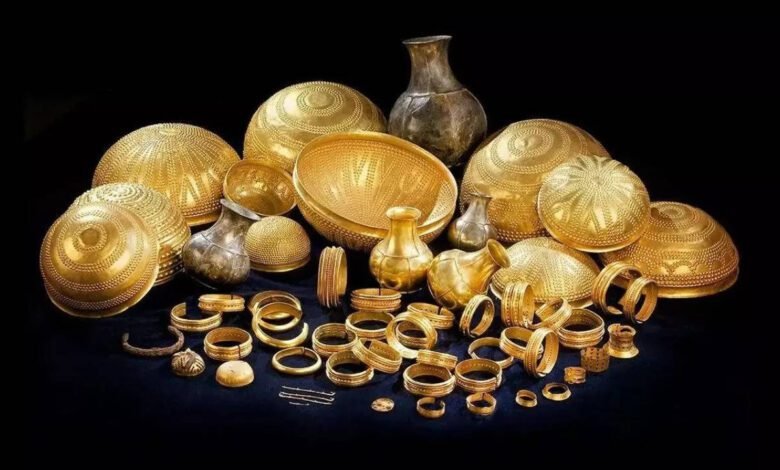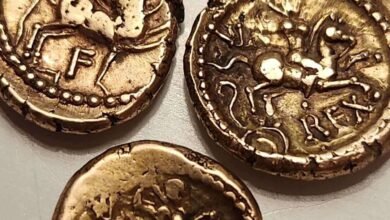The 3,000-year-old treasure found in Spain does not come from planet Earth

Among the treasures, two pieces stand out for their unique composition and provenance: a gold-plated sword pommel and an open bracelet, both made of iron. A recent study by a team of researchers from the National Archaeological Museum, the Diriyah Gate Development Authority and the Spanish National Research Council has revealed that these iron objects were not made from terrestrial iron, but from iron that came from a meteorite that hit the Earth before about a million years.
This image shows a striking sword pommel from the Villena hoard, made from iron sourced from a meteorite and decorated with intricate gold inlays that form a fascinating four-pointed star motif. Source: REPERTORIO DIGITAL CSIC
Using mass spectrometry, the researchers analyzed the iron-nickel alloy traces in the objects and confirmed that they matched the composition of meteoritic iron. They also compared the objects to other known examples of meteoritic iron artifacts from ancient cultures, such as the Egyptian dagger of Tutankhamun and the Inuit ulu knives from Greenland.
The study, published in the journal Trabajos de Prehistoria, suggests that these are the first and oldest meteoritic iron objects found in the Iberian Peninsula and that they date from the Late Bronze Age (1400-1200 BC). The researchers also suspect that the iron was obtained from a meteorite that fell near the site and that the locals used it to make these prestigious and symbolic objects.
Expand
Here you can see part of the treasure of Tesoro de Villena – an iron bracelet that came from a meteorite.
Source: MUSEO ARQUEOLOGICO DE VILLENA
The fusion of gold and iron in these objects has significant cultural and social value as it represents the combination of two rare and precious materials, one from the earth and one from the sky. Researchers believe these objects may have belonged to a community rather than an individual, and that they may have been hidden as treasure for protection or ritual purposes.
The discovery of these objects sheds new light on the history and culture of the Bronze Age in the Iberian Peninsula and reveals the existence of a metallurgical tradition that used material from outside planet Earth. It also raises questions about the origin and meaning of the treasure, as well as the manufacturing process and origin of the material.
The Treasure of Villena is an impressive testimony to Spain’s rich historical heritage and cultural diversity. Discovered in the municipality of Villena, this remarkable archaeological find not only demonstrates the artistic brilliance and metallurgical expertise of ancient civilizations, but also highlights humanity’s enduring fascination with the unknown and the celestial. Through its intricate craftsmanship and exquisite design, the treasure reveals the cultural sophistication of ancient Spanish societies while highlighting the profound interplay between earthly civilizations and the heavenly realms above. As we marvel at the ornate jewelry and ceremonial objects, we are reminded of the deep-rooted human connection with the cosmos and the centuries-old quest to understand its mysteries. The Treasure of Villena thus serves as a poignant symbol of our shared human history and the limitless wonders that lie beyond our earthly horizon.



